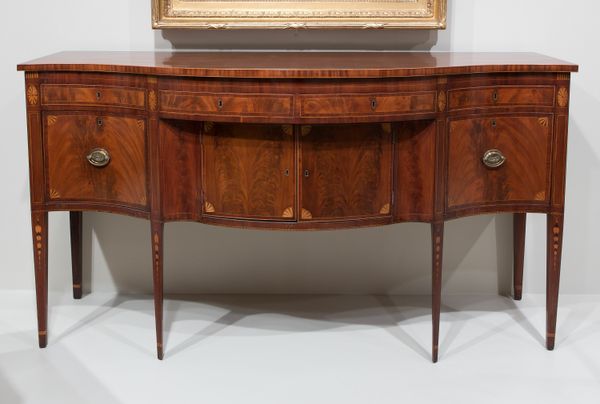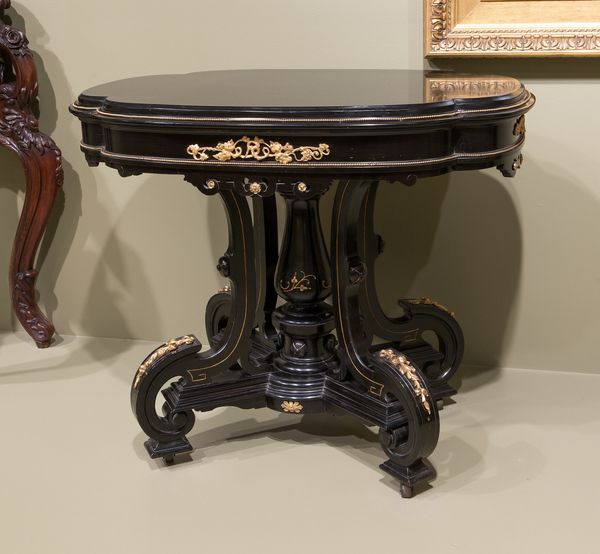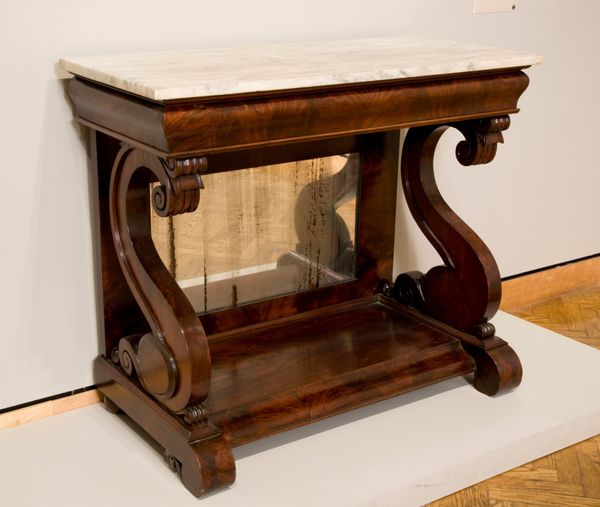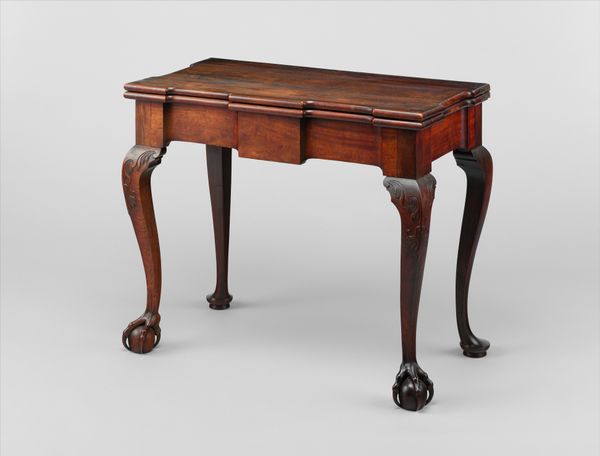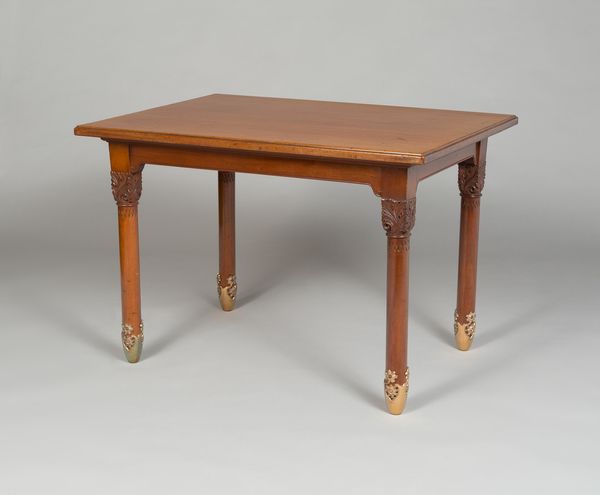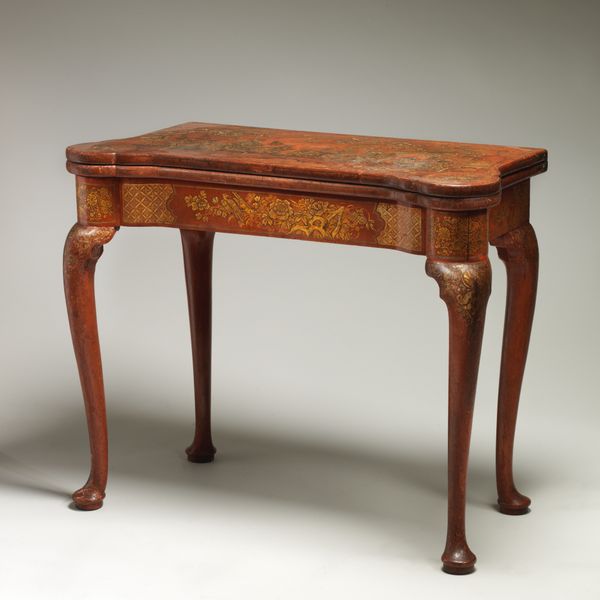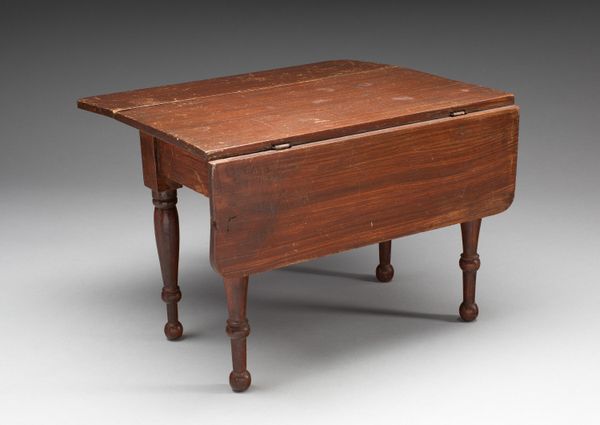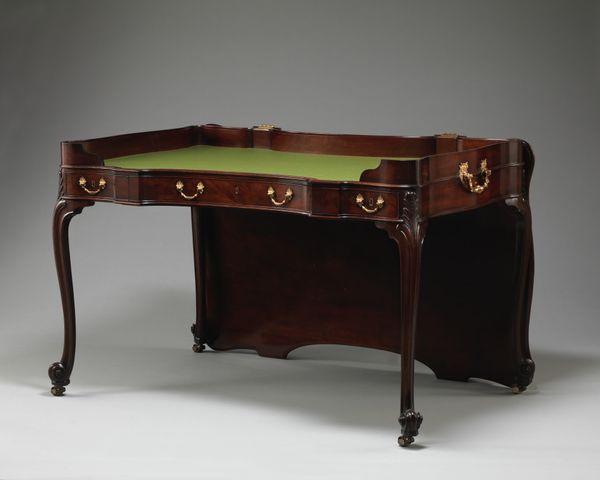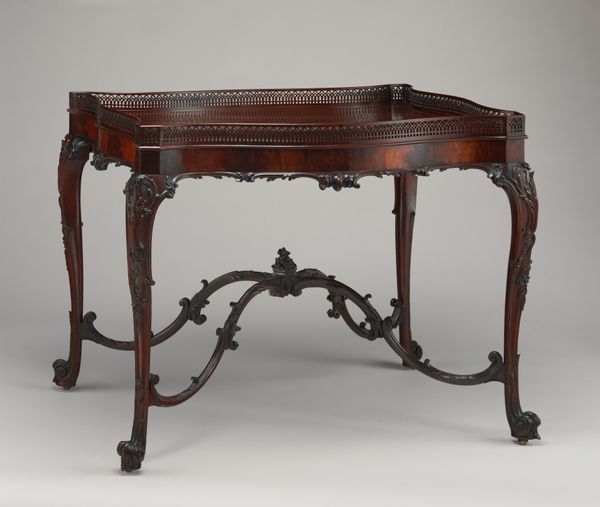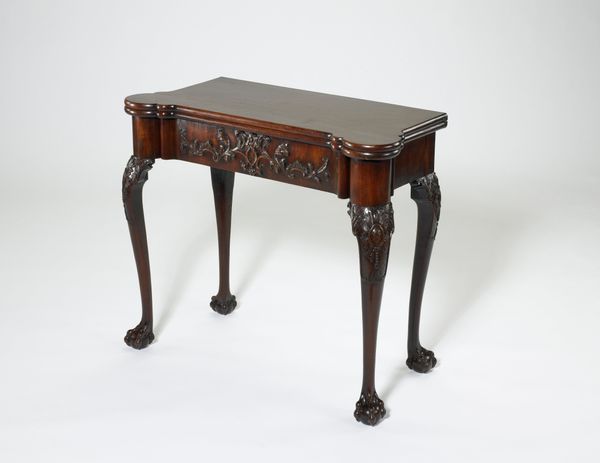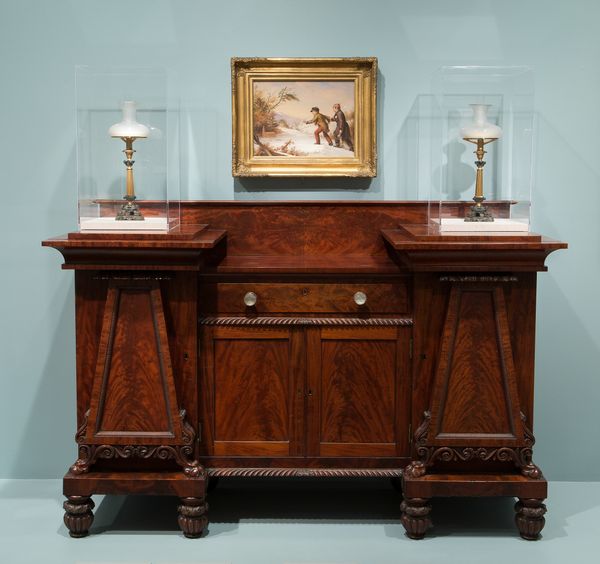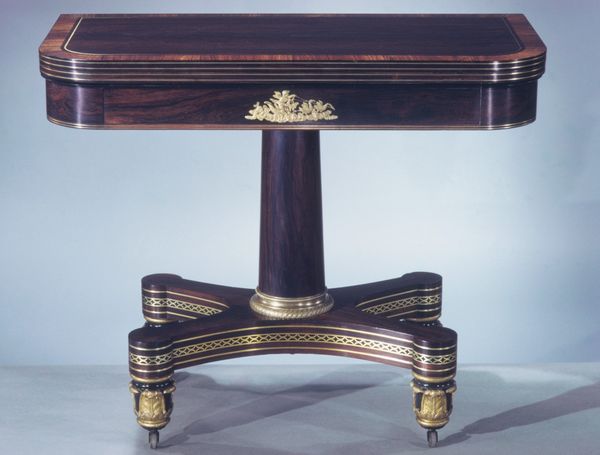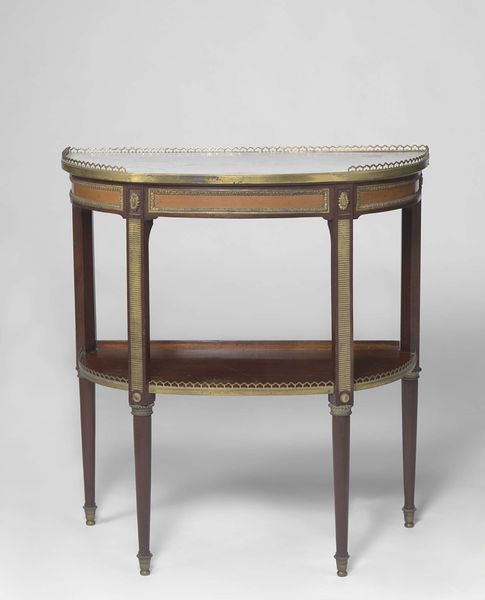
wood, marble
#
furniture
#
wood
#
decorative-art
#
marble
#
rococo
Dimensions: 74.3 × 124.5 × 54.6 cm (29 1/4 × 49 × 21 1/2 in.)
Copyright: Public Domain
Curator: Here we have a rather intriguing piece: a marble-slab table, crafted sometime between 1750 and 1790. The piece resides here at the Art Institute of Chicago, and although unsigned, represents the heights of Rococo decorative art. Editor: Ooh, it's got personality, doesn't it? Like a sophisticated sea creature – all curves and polished stone. I can almost hear the ocean if I stare at that marble long enough. Moody and a little whimsical. Curator: Whimsical is a fitting description! The Rococo was all about lightness and playfulness. This table embodies that in its asymmetrical curves and ornamental details, reflecting the social shifts toward leisure and refined tastes of the period. These furnishings, while objects of utility, simultaneously symbolized status. Editor: Status, sure, but I'm drawn to the, what do you call them, "ball-and-claw" feet? They're so wonderfully bizarre. Is there symbolism there or were they just feeling funky that day? Curator: Indeed, those are referred to as ball-and-claw feet. Their origin is commonly attributed to Chinese motifs that were then incorporated in British furniture design, gradually influencing design worldwide. The symbolism is thought to have derived from power and strength and perhaps even a bit of exoticism. Tables such as these stood in the fashionable drawing rooms. Editor: It's wild how an object can whisper tales of global exchange like that, though! And standing in those drawing rooms, absorbing secrets, stories... imagining it sitting there, generation after generation is beautiful. It just goes to show everything tells a story if you pause and listen. Curator: Precisely. Analyzing objects such as this table reveals an interesting perspective on the lives, aspirations, and tastes of those who once lived with it. Its history illuminates aspects of societal structure that would have been less obviously visible. Editor: A reminder to be as thoughtful and attentive to beauty as those long-gone owners, maybe. Well, thank you! Curator: And thank you.
Comments
No comments
Be the first to comment and join the conversation on the ultimate creative platform.
